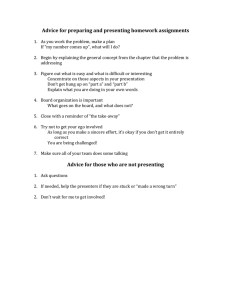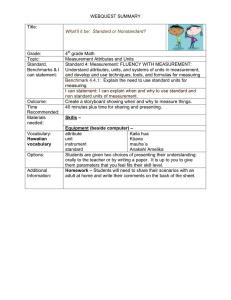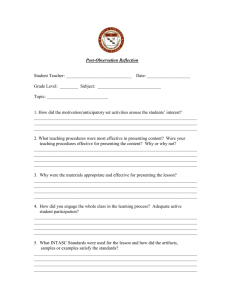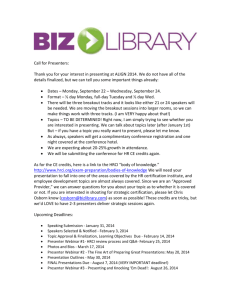Role of the Challenge Team (pdf)
advertisement
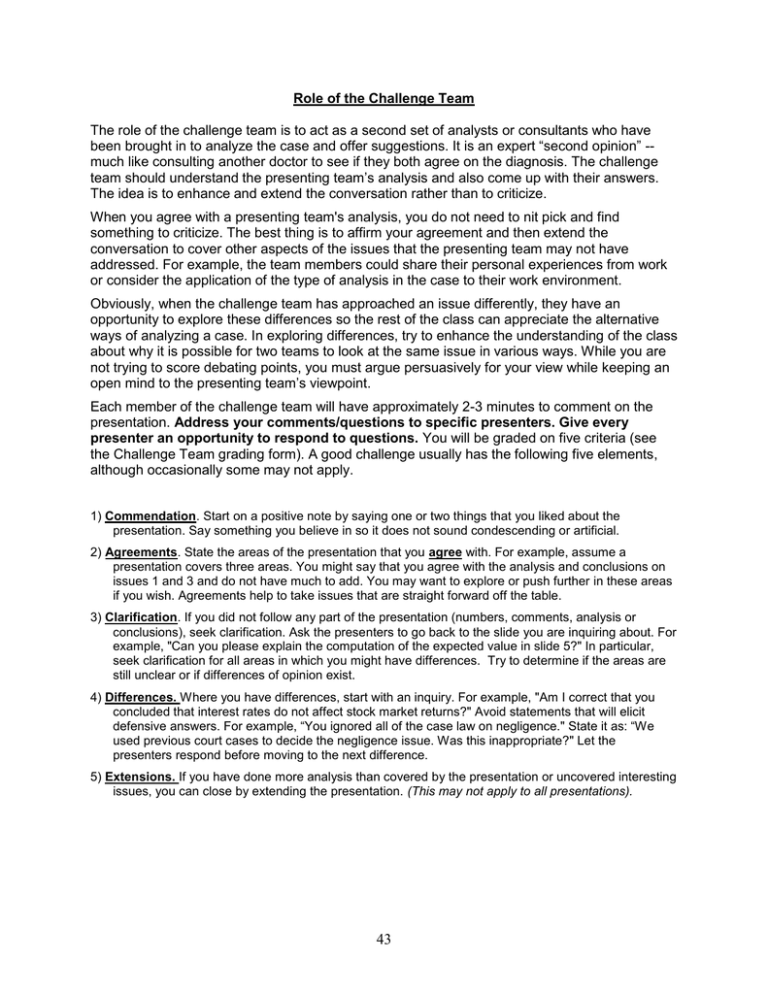
Role of the Challenge Team The role of the challenge team is to act as a second set of analysts or consultants who have been brought in to analyze the case and offer suggestions. It is an expert “second opinion” -much like consulting another doctor to see if they both agree on the diagnosis. The challenge team should understand the presenting team’s analysis and also come up with their answers. The idea is to enhance and extend the conversation rather than to criticize. When you agree with a presenting team's analysis, you do not need to nit pick and find something to criticize. The best thing is to affirm your agreement and then extend the conversation to cover other aspects of the issues that the presenting team may not have addressed. For example, the team members could share their personal experiences from work or consider the application of the type of analysis in the case to their work environment. Obviously, when the challenge team has approached an issue differently, they have an opportunity to explore these differences so the rest of the class can appreciate the alternative ways of analyzing a case. In exploring differences, try to enhance the understanding of the class about why it is possible for two teams to look at the same issue in various ways. While you are not trying to score debating points, you must argue persuasively for your view while keeping an open mind to the presenting team’s viewpoint. Each member of the challenge team will have approximately 2-3 minutes to comment on the presentation. Address your comments/questions to specific presenters. Give every presenter an opportunity to respond to questions. You will be graded on five criteria (see the Challenge Team grading form). A good challenge usually has the following five elements, although occasionally some may not apply. 1) Commendation. Start on a positive note by saying one or two things that you liked about the presentation. Say something you believe in so it does not sound condescending or artificial. 2) Agreements. State the areas of the presentation that you agree with. For example, assume a presentation covers three areas. You might say that you agree with the analysis and conclusions on issues 1 and 3 and do not have much to add. You may want to explore or push further in these areas if you wish. Agreements help to take issues that are straight forward off the table. 3) Clarification. If you did not follow any part of the presentation (numbers, comments, analysis or conclusions), seek clarification. Ask the presenters to go back to the slide you are inquiring about. For example, "Can you please explain the computation of the expected value in slide 5?" In particular, seek clarification for all areas in which you might have differences. Try to determine if the areas are still unclear or if differences of opinion exist. 4) Differences. Where you have differences, start with an inquiry. For example, "Am I correct that you concluded that interest rates do not affect stock market returns?" Avoid statements that will elicit defensive answers. For example, “You ignored all of the case law on negligence." State it as: “We used previous court cases to decide the negligence issue. Was this inappropriate?" Let the presenters respond before moving to the next difference. 5) Extensions. If you have done more analysis than covered by the presentation or uncovered interesting issues, you can close by extending the presentation. (This may not apply to all presentations). 43
